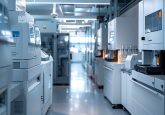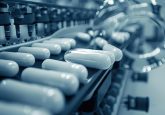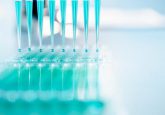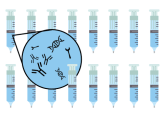What are biologics?
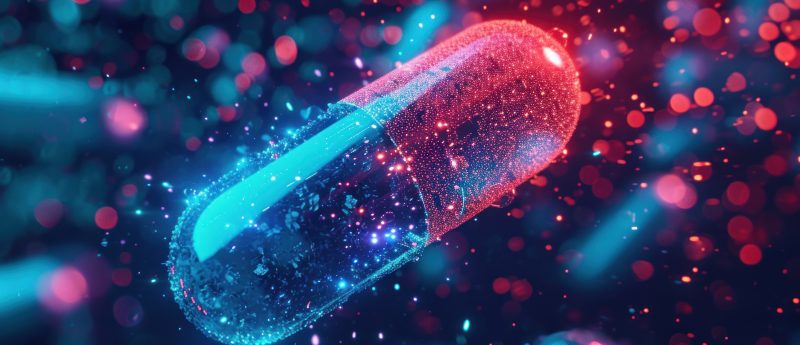
What are biologics?
Biologics, according to the US FDA, include “a wide range of products such as vaccines, blood and blood components, allergenics, somatic cells, gene therapy, tissues and recombinant therapeutic proteins [1].” Biologics can be sugars, proteins, nucleic acids or a complex combination of these substances, but the key message remains that they are isolated from a variety of natural sources.
A quick Google search will show you that a similar sentiment is confirmed by the NHS (UK): “[Biologics are] made from proteins and other substances produced by the body [2]” and WebMD (NY, USA): “[Biologics are] made from substances found in living things [3].”
So, to answer our question (at least for now), biologics are drugs derived from natural sources. Biologic drugs can be used to treat a variety of diseases and are often used to treat immune-related diseases such as rheumatoid arthritis, psoriasis, ankylosing spondylitis and Crohn’s Disease. In immune system-related diseases, biologics act to interrupt signals and pathways in the immune system in such a way to reduce the damage inflicted by these conditions.
Biologics are, however, far from limited to the treatment of immune-related diseases. Biologic drugs are at the cutting edge of medical research and have, to some extent, revolutionized cancer treatment and offered hope to patients who have previously had no available treatment options.
Like all drugs, biologic therapies have the potential to cause side effects. A Cochrane overview studied the side effects reported for nine common biological therapies. The review reported 1% absolute harm from serious side effects (127 out of 1,000 had serious side effects from any biologic compared with 118 people out of 1,000 who took a placebo). Additionally, 5% absolute harm from all side effects (770 out of 1,000 had side effects from any biologic compared with 724 people out of 1,000 who took a placebo) was reported. The authors, however, acknowledged the necessity for further research into the side effects of biologics [4].
As the number of approved biological therapies increases and usage becomes more widespread, understanding of side effects will also increase. An example of a recently approved biologic therapy is Padcev (enfortumab vedotin-ejfv) a Nectin-4-directed antibody and microtubule inhibitor conjugate. Padcev gained US FDA approval in December 2019 for the treatment of locally advanced or metastatic urothelial cancer in patients who have already received all standard chemotherapy and immunotherapy treatments [5].
Another example, Reblozyl (luspatercept–aamt), received US FDA approval in June 2019. Reblozyl was approved for the treatment of anemia in adult patients with the rare blood disorder, thalassemia.
You might also like…
All that being said, being at the forefront of medical research comes at a price, quite literally. According to 2017 data from the IQVIA institute, in the USA biologics only accounted for 2% of all drug prescriptions but at the same time were responsible for a whopping 37% of net drug spending [6].
New research, manufacturing techniques and clinical trial processes all contribute to making biologics some of the most expensive drugs on the market. However, this landscape is likely to change dramatically over time, thanks to biosimilars.
What is a biosimilar?
Most of us are aware that conventional small molecule drugs are marketed under specific brand names, being familiar with the generic versions of these same drugs. The US FDA requires generic medicines to perform the same way as brand-name medicines, stating that: “A generic medicine is the same as a brand-name medicine in dosage, safety, effectiveness, strength, stability and quality, as well as in the way it is taken and the way it should be used.”
In this situation, generic drugs can be considered an equal substitute for their brand name counterparts. In the USA, a reported 90% of all prescriptions are for generic drugs [7]. In the UK, the Kings Fund reported that the prescription of generic drugs has saved the NHS around £7.1 billion since 1976 and made it possible to prescribe 490 million more items without an increase in total spending [8].
It is hoped that continued research could lead to a similar situation with the discovery, development and manufacture of biosimilars. However, unlike a generic drug, a biosimilar is not an exact copy of its biologic counterpart. The inherent nature of biological products means that all biologics – even reference products – show inter-batch variation.
Although biosimilars differ in their structure to their counterpart biologics, for a biosimilar to be ‘biosimilar’ they must have no clinically meaningful differences from an existing FDA-approved reference product.
According to the FDA, biosimilars must be ‘highly similar.’ In practice this means that minor differences in clinically inactive components are acceptable, as long as manufacturers can demonstrate that the structure and function of their biosimilar is highly similar to the reference product [9].
Unfortunately, developing a biosimilar, a complex biologic product and then performing the extensive analysis and clinical trials necessary to demonstrate ‘high similarity’ are a costly process, which means biosimilars have not yet seen the ‘overnight’ success of generic products.
Although a complex process, since filgastrim, the first biosimilar to be approved by the US FDA in 2015, the number of US FDA approved biosimilar therapies has increased year on year; three were approved in 2016, five in 2017, seven in 2018 and ten in 2019 [10].
Can red tape keep up with the pace of research?
As with most research, the field of biologics is dynamic and fast-paced. However, in the case of biologics, research continues at such a pace, terminology and regulations are hard pushed to keep up.
In a recent blog post Dennis Hu (Genentech, CA, USA) raised the interesting case of givosiran (an siRNA drug approved by the FDA in November 2019) and golodirsen (an antisense oligonucleotide drug approved by the FDA in December 2019) [11].
Let’s revisit our original question: ‘what are biologics?’ and our first answer: drug products derived from living organisms.
The two aforementioned drugs are RNA-based. As we know, RNA is derived from living organisms, however, these two drugs were entirely synthesized in a chemical process. Where do we stand now? Hu’s article takes a brief dive into the classification of biologic drugs, citing a recent FDA press release that allows the possibility of manufacturers chemically synthesizing a biological product [12].
Clearly, it is not simple to define a biological product and to an extent, the definition is up for interpretation. While flexible scientific interpretation can be appropriate in the research laboratory, regulators must carefully and reactively make changes as the field continues to evolve.
Conclusion
It is clear that there is huge therapeutic potential in biologics and biosimilars, which in the latter case is largely untapped. Research is booming, with 14 novel biologic drugs (depending on your definition) and ten biosimilars approved in 2019. To match pace with research efforts, regulators must continue to be reactive to ensure therapeutic potential can be realized. Although it is likely that the impact of the global COVID-19 pandemic will manifest in a reduced number of biological product approvals in 2020, for the most part the future of biologics is looking bright.
[1] US FDA. What are “biologics” questions and answers.
www.fda.gov/about-fda/center-biologics-evaluation-and-research-cber/what-are-biologics-questions-and-answers
[Accessed 13 May 2020]
[2] NHS UK. Biological and biosimilar medicines (biosimilars).
www.nhs.uk/conditions/biological-and-biosimilar-medicines/
[Accessed 13 May 2020]
[3] WebMD. The latest in psoriasis treatment.
www.webmd.com/skin-problems-and-treatments/psoriasis/research
[Accessed 13 May 2020]
[4] Singh JA, Wells GA, Christensen R et al. Adverse effects of biologics: a network meta-analysis and Cochrane overview. Cochrane Database Syst. Rev. doi:10.1002/14651858.CD008794.pub2 (2011)(Epub)
[5] US FDA. FDA approves new type of therapy to treat advanced urothelial cancer.
www.fda.gov/news-events/press-announcements/fda-approves-new-type-therapy-treat-advanced-urothelial-cancer
[Accessed 13 May 2020]
[6] IQVIA. Medicine use and spending in the US: a review of 2017 and outlook to 2022.
www.iqvia.com/insights/the-iqvia-institute/reports/medicine-use-and-spending-in-the-us-review-of-2017-outlook-to-2022
[Accessed 13 May 2020]
[7] Forbes. Biologic medicines: the biggest driver of rising drug prices.
www.forbes.com/sites/theapothecary/2019/03/08/biologic-medicines-the-biggest-driver-of-rising-drug-prices/#4ed35d5b18b0
[Accessed 13 May 2020]
[8] The King’s Fund. How much has generic prescribing and dispensing saved the NHS?
www.kingsfund.org.uk/blog/2015/07/how-much-has-generic-prescribing-and-dispensing-saved-nhs
[Accessed 13 May 2020]
[9] US FDA. Biosimilar and interchangeable products.
www.fda.gov/drugs/biosimilars/biosimilar-and-interchangeable-products
[Accessed 13 May 2020]
[10] US FDA. Biosimilar product information.
https://www.fda.gov/drugs/biosimilars/biosimilar-product-information
[Accessed 13 May 2020]
[11] Drug Hunter. What is a biologic drug anyway?
https://drug-hunter.com/2020/01/19/whatisabiologic/
[Accessed 13 May 2020]
[12] US FDA. Statement on low-cost biosimilar and interchangeable protein products.
www.fda.gov/news-events/press-announcements/statement-low-cost-biosimilar-and-interchangeable-protein-products
[Accessed 13 May 2020]

